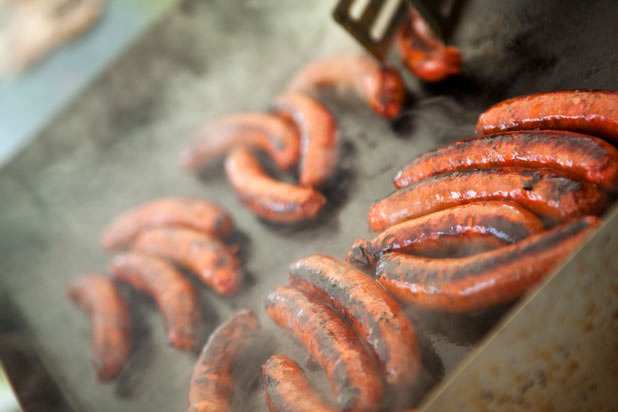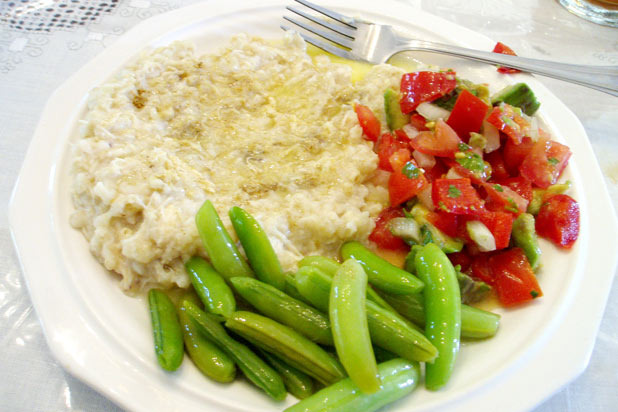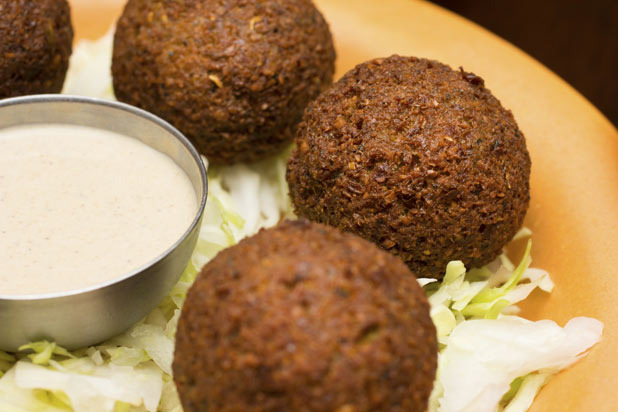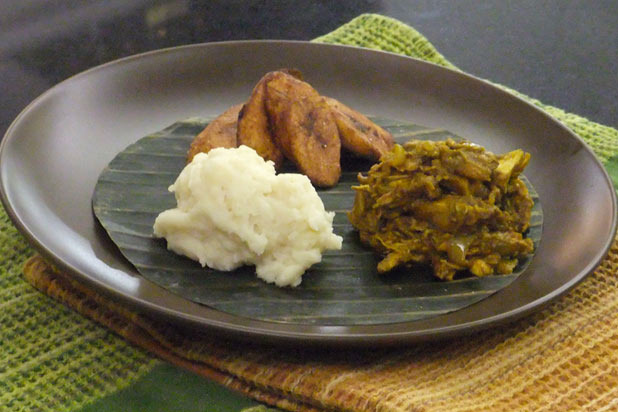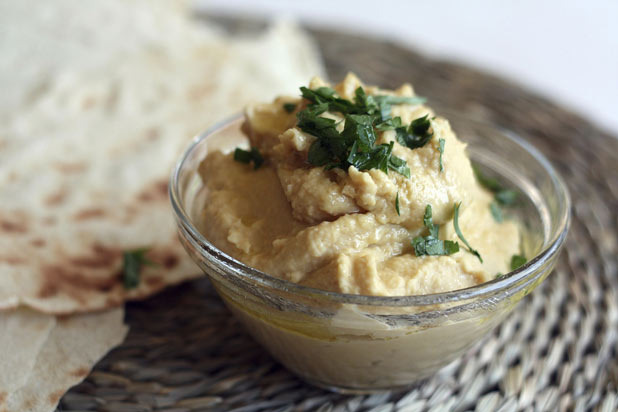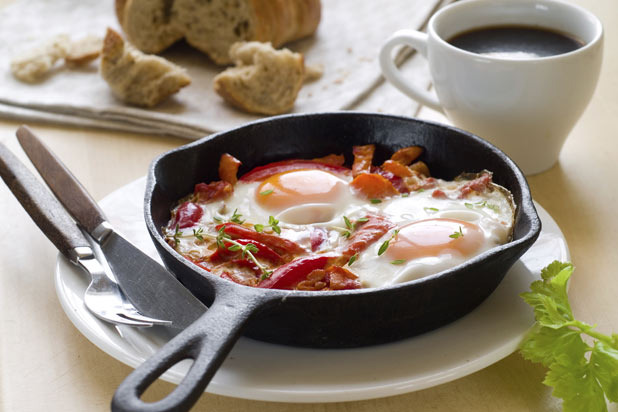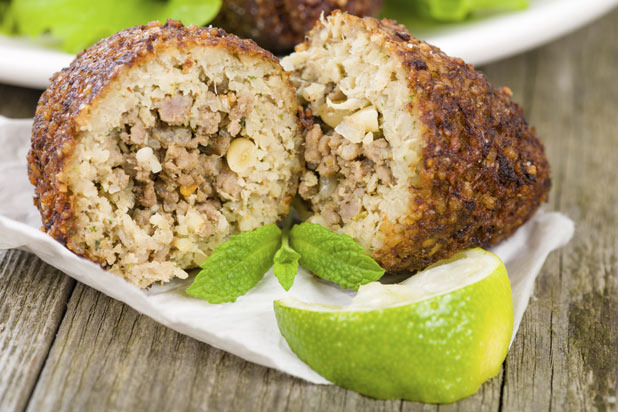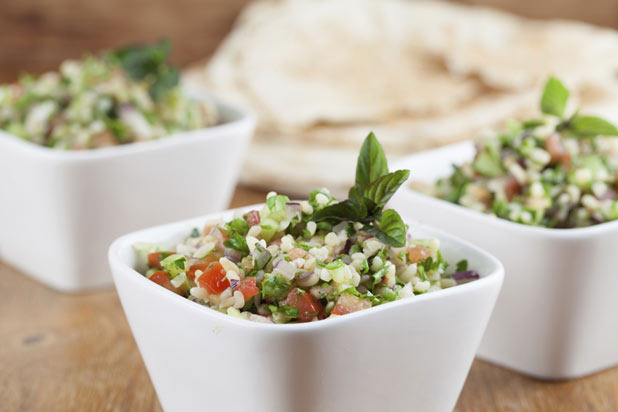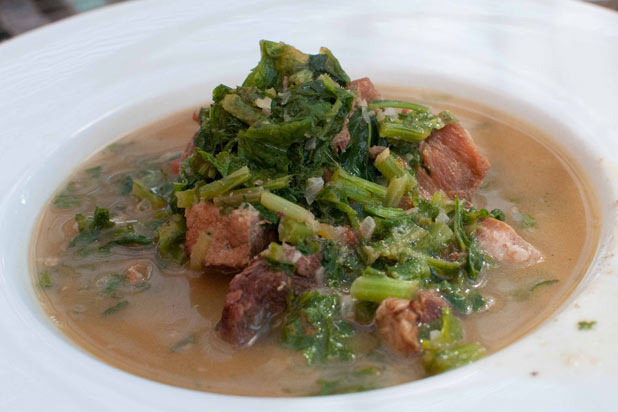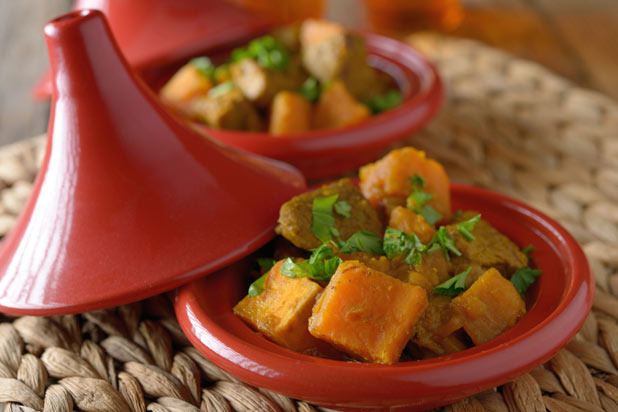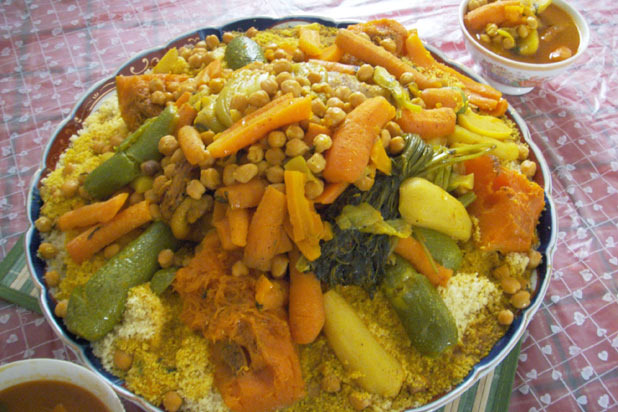Foods Worth Traveling For: Africa And Middle East (Slideshow)
Algeria: Merguez
Merguez is a North African preserved meat that is typically a fresh or dried lamb sausage. Different variations of the dish include sausages made with veal, seasoned with olive oil, lemon, or black pepper. The pork-free sausage is popular in regions like Algeria, where many of the inhabitants maintain pork-free diets. Head over to Restaurant Atlas in Annaba for some authentic Algerian merguez.
Angola: Muamba de Galinha
Typically a home-cooked meal, this iconic dish is a chicken stew with palm oil. Some variations are made with pumpkin and okra. In the capital of Angola, Luanda, there are limited options for dining out, but you can find the dish at Esplanade Gester for a laid-back, authentic experience.
Armenia: Harissa
Not to be confused with the chile paste from Tunisia, harissa is a typical Armenian dish that has a similar consistency to porridge. It is made with wheat grain and cooked with meat or chicken, and is traditionally served on Easter. Originally created as a meal for the poor, harissa continues to be offered as a charity meal. Visit Old Erivan to taste this dish while listening to live acoustic folk music.
Cameroon: Ndole
Ndole is the national dish of Cameroon, and is a stew that is made with nuts, West African leaves, and beef or fish. Some variations include bananas or goat meat. Though the nation is not particularly well-known for restaurants and dining out, visitors can still have exceptional ndloe at the markets at Nlongkak.
Cape Verde: Cachupa
Cachupa is a Cape Verdean version of the French cassoulet, and can be made with beans, corn, cassava, sweet potato, pork, chorizo, and tuna. It is considered the national or signature dish of Cape Verde. Although cachupa is always a slow-cooked dish, each island on Cape Verde has a different variation of the meal, and ingredients can often depend on the success of the harvest that year. Restaurant Relax in Santa Maria serves an authentic version of the dish in a family friendly location.
Egypt: Falafel
This Middle Eastern favorite is found in abundance in Egypt. Made with ground chickpeas and typically served in a pita, it is one of the nation's most popular dishes. Variations of falafel can include ground fava beans, and vegetables or different sauces such as tahini can often accompany it. Try popular favorites like Kazaz and Al Sharouk in Cairo for this iconic dish.
Egypt: Ful Medames
Comprised of stewed fava beans, olive oil, herbs, spices, and lemons, this Egyptian dish was long considered to be a peasant food. Today, Egyptians of every economic standing eat what is considered to be the country's national dish. Ful medames are typically cooked over a long period of time by street vendors or in restaurants where the dish is served as a snack or meze. Some versions come with hard-boiled eggs, tahini, tomato sauce, or cream sauce, and are often served with Egyptian pocket bread. For a fancier option, visit Abu El Sid in Cairo.
Ethiopia: Kitfo
Kitfo, or Ethiopian steak tartare, is a typical Ethiopian dish that is made up of beef, butter, and mitmita (a spicy pepper powder made up of chile peppers, cardamom, cloves, and sea salt). Kitfo is prepared completely raw, and served with an Ethiopian butter called niter kibe. Eating this raw meat dish can sometimes be considered a male bonding activity and it was historically eaten by the elite or upper-middle-class. For some of the best kitfo in town, travel to Teshomech Kitfo in Addis Ababa.
Eritrea: Lamb Zigini with Injera
Injera is a type of spongy bread that also functions as a utensil for many cuisines throughout the Middle East and Africa. In Eritrea, injera is eaten with a stew called zigini, often made with lamb. For an authentic version of this dish, visit Blue Nile in Asmara.
Gabon: Poulet Nyembwe
Poulet nyembwe is a traditional chicken dish that is cooked with sauce made with African palm nuts. Considered the national dish of Gabon, the spicy poulet nyembwe is often accompanied by white rice, plantains, pounded yam, or cassava. Though some might argue the dish is best when it's homemade, visitors can still go to L'Odika to sample a taste.
Ghana: Fufu
Fufu is to Ghanan cuisine what rice is to Chinese food. Made from boiled and pounded cassava, yam, or plantain, fufuis eaten as an accompaniment to stews or soups. Eat it like the locals do, with your hands at Buka Restaurant in Accra.
Iran: Chelow Kebab
This traditional Iranian meal consists of grilled meat on a stick served over spiced and buttered rice and often accompanied by grilled tomatoes or even a raw egg yolk. Many consider the dish to be one of the most famous and most popular dishes in Iran, with its origins in Tehran. There is always an option to try this dish on the street, but you can also visit Bistango in Tehran for a more upscale spot.
Jordan: Mansaf
A holiday meal and the national dish of Jordan, mansaf is a staple at every special celebration. It is served on a communal plate and is reminiscent of early Bedouin culinary practices. Mansaf is comprised of lamb cooked in fermented dried yogurt and is served with rice and, often, pine nuts, almonds, or other nuts. The fermented yogurt, called jameed, is made from goat's milk that is placed in a container to ferment. While mansaf is traditionally a social and celebratory dish, it can also be served as a sign of appreciation. Try it at Tawaheen al-Hawa in Amman.
Israel: Hummus
Hummus (with a little pita) can sometimes be considered a full meal in Israel, as opposed to its role as a side dish in many other parts of the world. Hummus is made with cooked and mashed chickpeas, olive oil, lemon, garlic, and, often, tahini. The exact origins of hummus are contested, but it largely considered to be one of the oldest prepared foods in the Middle East. Head to Jaffa to try hummus Abu Hassan (also called Ali Caravan) or to Hummus Ashkara in Tel Aviv for some of the best in town.
Israel: Shakshuka
Though it's believed to have originated elsewhere, shakshuka has become a beloved Israeli staple. Consisting of eggs poached in a spicy tomato sauce, shakshuka is usually served with warmed pita for breakfast or lunch, though some would argue it's an around-the-clock dish. The best version can be found in Tel Aviv at a restaurant named after this iconic dish, Dr. Shakshuka.
Kazakhstan: Beshbarmak
This iconic dish dates back to nomadic tribes in Kazakhstan and Kyrgyzstan. The word translates into "five fingers," which is appropriate because the dish is meant to be eaten by hand. Beshbarmak is made up of boiled meat (sometimes horse meat) that's seasoned with parsley and coriander and served with noodles. Some variations might include chicken, camel meat, or fish. In some regions there is a special ceremony to go along with eating beshbarmak, in which a sheep's head is placed before an honorable guest. Try it at Zheti Qazyna in Almaty.
Kuwait: Machboos
This simple dish is popular among Kuwaiti citizens despite the availability of many different cuisines throughout Kuwait City. Made up of spices, saffron, basmati rice, and rosewater, this national dish is served alongside beef, lamb, chicken, or fish. Try some of the best machboos at Freej Swaileh in Salmiya.
Lebanon: Kibbeh
Though this traditional dish tends to vary, its roots are always the same. Comprised of bulgur or rice and ground meat mixed together in different forms, kibbeh can be fried, place in soup, baked in a pie, or served raw, depending on the region. No matter how it is prepared, it is typically cooked with olive oil and served with a lemon garnish. Locals recommend Zawat in southern Lebanon for the best version of this dish.
Lebanon: Tabbouleh
Found in many Arabic countries, tabbouleh varies slightly depending on the region. With its origins in Lebanon, the dish is made of bulgur, tomatoes, and finely chopped vegetables and herbs (often parsley). It is often served as a side to other traditional dishes such as falafel. Some of the best tabbouleh can be found at popular Lebanese restaurant Manuella.
Madagascar: Romazava
Romazava is a stew of meats and green vegetables that is a staple dish of Madagascar. It was first served at feasts in the 1800s before the French colonization of the country, and although most dishes from this time period are starting to fall by the wayside and are much less prevalent, romazava remains a part of the current diet. Romazava can be sampled the Hôtel du Louvre's restaurant in Antananarivo.
Morocco: Tagine
This Moroccan dish is named after the earthenware pot that it is cooked in. The tagine pot is made of heavy clay and has two parts: a base unit and a cover. The dish cooked in this pottery is usually a rich, slow-cooked stew made of meat, chicken, or fish mixed in with vegetables and fruit. Because of the design of the pot, a minimal amount of liquid is required to cook the dish and the pot is usually placed over hot coals to cook the stew. The dish is a national pride of Morocco and can be found in almost any restaurant or street vendor. For a high-end version of the dish, try it at Les Trois Saveurs in Marrakech.
Morocco: Pastilla
Pastilla, salty and sweet at the same time, is a flaky pastry filled with meat, usually squab or shredded chicken, to create a salty and savory filling that contrasts with the sweet phyllo dough, cinnamon, and sugar. One of the best can be found at Al Jawda pastry shop in Marrakech.
Pakistan: Biryani
Even though there are many, many versions of biryani, the favorite in Pakistan is sindhi biryani. It has chicken, basmati rice, vegetables, chiles, and yogurt. Student Biryani is known for serving some of the city's favorite biryani. The spot is so good that it went from a street stand to a brick-and-mortar chain.
Pakistan: Nihari
Nihari is a guilty pleasure food, according to locals, that originated in the 18th century in Old Delhi. It is made with meat, chiles, herbs, spices, and vegetables. Bones are left in so guests can enjoy the taste of the rich marrow. Stop into Javed Nihari in Karachi for an authentic taste.
Saudi Arabia: Kabsa
The lists of spices, meats, and vegetables that go into Saudi Arabian kabsa is exhaustive; cinnamon, cloves, saffron, nutmeg, chicken, lamb, goat, beef, and fish are just a few of the ingredients the recipe calls for. But, to simplify things, think of it as a spiced rice dish with meat and vegetables. Al Taboon, in Riyadh, specializes in kabsa and is a local favorite.
Senegal: Thieboudienne
Thieboudienne, which locals call "thieb," breaks down barriers — people of all backgrounds love this dish and will be seen together at local hole-in-the-walls, like Chez Loutcha in Dakar. Thieb is made with fish, rice, and tomato sauce with onions and its creation is reportedly attributed to one clever woman in Saint-Louis, Senegal.
South Africa: Bobotie
Native dishes in South Africa showcase the many culinary influences found throughout the country. In the case of bobotie, the influence is mainly Dutch. It is a rich dish made with minced meat and an egg topping that dates all the way back to the 17th century. Try it at Café de la Vie in Johannesburg.
Tunisia: Couscous
Couscous is a daily staple for many people in Tunisia, as well as in Morocco and Algeria. Locals and visitors can try the long-loved dish at Dar Chakra in Monastir.
Turkey: Doner Kebab
Though there is much debate over who makes the best doner kebab in Istanbul, everyone agrees that it is delicious. Meat (often lamb) is stacked onto a spit and roasted before being vertically sliced onto pita. From there the meat is topped with tomatoes, onions, lettuce, pickles, cabbage, and cucumber, and sauces like tahini or tzatziki are poured on top. Ciya Kebab and Dönerci Sahin Usta make some of the most beloved kebabs in the city.
Senegal: Poulet Yassa
This traditional chicken stew gets its flavor from a long marination with lemon, chile, and onions. Originating in the Casamance region of southern Senegal, today poulet yassa is a dishpopular throughout Senegal and West Africa. Sample it at restaurants likeChez Loutcha or Le Djembe in Dakar.
South Africa: Boerewors
The history of boerewors can be traced to an old Dutch recipe, and this farmers sausage is a South African staple. If you're lucky, you'll get invited to a braai, or cookout, where the coiled sausage is typically prepared, or ask for it at a local butcher.
South Africa: Bunny Chow
Bunny Chow, or simply "bunny," has nothing to do with the animal of its namesake. The predecessor of the "bread bowl" popularized at soup joints in the U.S., bunny chow is a hollowed out loaf of bread filled with Indian curry. The dish is meant to be eaten with your hands, and is one of the most popular portable meals in South Africa. Get your hands dirty at popular bunny joints Patels Vegetarian Refreshment Room or Goundens Restaurant & Take Away, both in Durban.
Tunisia: Brik
Turkey: Kaymak
No trip to Turkey would be complete without partaking in kaymak, a type of clotted cream made from slowly boiled buffalo milk. Eaten simply with honey and some bread, it's one of the most satisfying breakfasts you'll find. A particularly divine version can be sampled at the shop Beşiktaş Kaymakçi in Istanbul.
Turkey: Lahmacun
Similar in appearance to Italian pizza, lahmacun is a thin dough topped with spicy ground beef or lamb and tomato sauce. It's both appetizer and main course, and the ultimate Turkish street food. Halil Lahmacun and Fıstık Kebap both turn out great versions of lahmacun in Istanbul.
Turkmenistan: Palaw
Palaw is essentially a rice pilaf; it's made from strewed rice, meat, and vegetables, and is sometimes sprinkled with raisins or currants. A favorite place to try it is at Ankara restaurant in Ashgabat.
Uganda: Matoke
Matoke is made from steamed plantains and is Uganda's national dish. Kampala's Ekitoobero Restaurant serves matoke just the way the locals love it, and has been open for more than 10 years.
Yemen: Saltah
Saltah is relatively hearty for a lunch dish. It is made with a base of lamb, chicken, or beef and more closely resembles a stew rather than a soup. Many people eat it with flatbread and locals head over to Houmald Salta in San'a, which is said to have the best in town.
